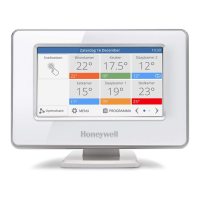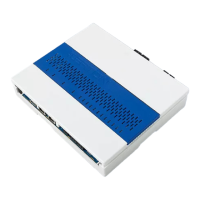ENGINEERING MANUAL OF AUTOMATIC CONTROL
VALVE SELECTION AND SIZING
441
In globe mixing valve applications, the force exerted on the
valve disc due to unbalanced pressure at the inlets usually
remains in the same direction. In cases where there is a reversal
of force, the force changes direction and holds the valve disc
off the seat, cushioning it as it closes. If the pressure difference
for the system is greater than the pressure ratings of available
globe mixing valves, use a ball mixing valve or two butterfly
valves in a tee configuration.
Globe mixing valves are not suitable for modulating diverting
valve applications. If a mixing valve is piped for modulating
diverting service, the inlet pressure slams the disc against the
seat when it nears the closed position. This results in loss of
control, oscillations, and excessive valve wear and noise. Mixing
valves are acceptable using about 80 percent of the close-off
rating, but not recommended, in two-position diverting valve
applications.
DIVERTING VALVE
A globe diverting valve provides one common inlet port and
two outlet ports. The diverting valve uses two V-port plugs
which seat in opposite directions and against the common inlet
flow. The valve receives a liquid from one inlet port and
discharges the liquids through the outlet ports (Fig. 12)
depending on the position of the valve disc. If the valve disc is
against the bottom seat (stem up), all the liquid discharges
through the side outlet port. If the valve disc is against the top
seat (stem down), all the liquid discharges through the bottom
outlet port.
The close-off pressure in a diverting valve equals the
maximum value of the inlet pressure minus the minimum value
of the downstream pressure.
Globe diverting valves must not be used for mixing service.
As with mixing valves used for diverting service, media pressure
drop across the valve can cause it to slam shut with resulting
loss of control.
EXAMPLE:
A diverting valve application has 20 psi maximum on the
inlet port, one outlet port discharging to the atmosphere,
and the other outlet port connecting to a tank under 10 psi
constant pressure. The pressure difference between the inlet
and the first outlet port is 20 psi and between the inlet and
second outlet port is 10 psi. The application requires a
diverting valve with at least 20 psi close-off rating.
Every valve has a capacity index or flow coefficient (C
v
).
Typically determined for the globe and ball valves at full open
and about 60 degrees open for butterfly valves. C
v
is the
quantity of water in gpm at 60F that flows through a valve
with a pressure differential of 1 psi. Sizing a valve requires
knowing the medium (liquid or gas) and the required pressure
differential to calculate the required C
v
. When the required C
v
is not available in a standard valve, select the next closest and
calculate the resulting valve pressure differential at the required
flow to verify to verify acceptable performance.
After determination of the valve C
v
, calculation of the flow
of any medium through that valve can be found if the
characteristics of the medium and the pressure drop across the
valve are known.
WATER VALVES
Determine the capacity index (Cv) for a valve used in a water
application, using the formula:
Where:
Q=Flow of fluid in gallons per minute required
to pass through the valve.
G=Specific gravity of the fluid (water = 1).
h=Pressure drop in psi. See Figures 14 and 15
for glycol solution correction values.
Determining the C
v
of a water valve requires knowing the
quantity of water (gpm) through the valve and the pressure
drop (h) across the valve. If the fluid is a glycol solution, use
the pressure drop multipliers from either Figure 14 or 15. See
the sections on QUANTITY OF WATER and WATER VALVE
PRESSURE DROP. Then select the appropriate valve based
on C
v
, temperature range, action, body ratings, etc., per VALVE
SELECTION guidelines.
C
v
=
Q
h
VALVE SIZING

